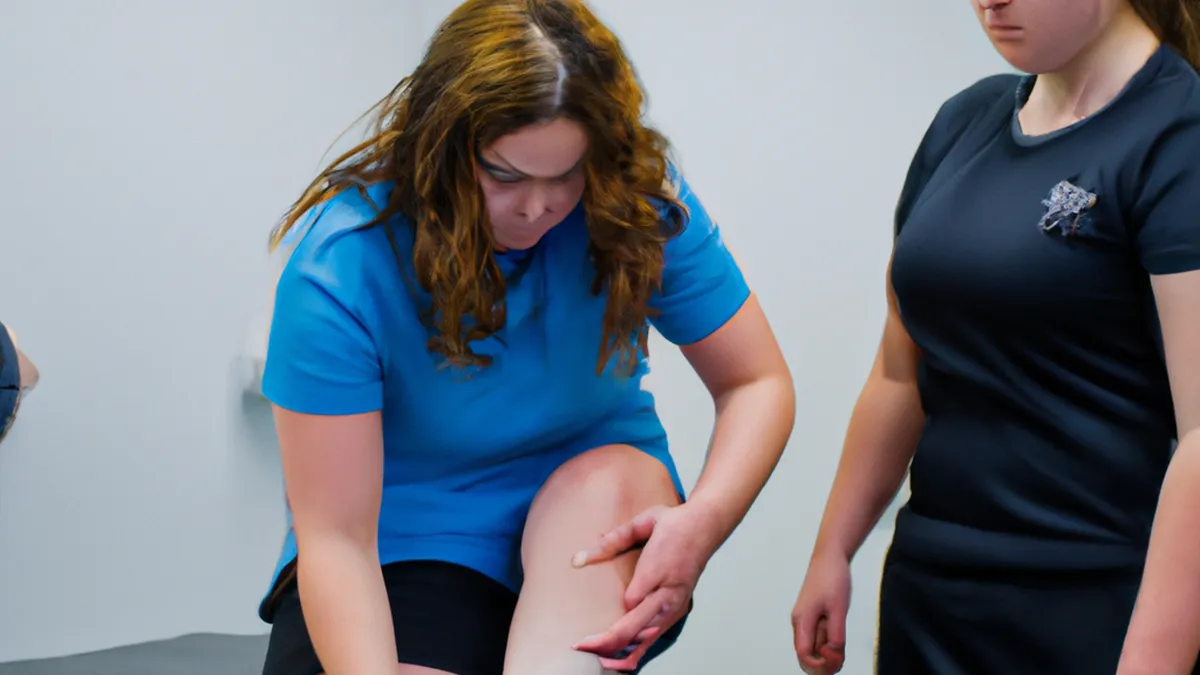Successful Rehabilitation Approaches for Athletes
Best Practices for Ankle Injury Rehabilitation in Athletes
As an Amazon Associate I earn from qualifying purchases.
Gear tip: consider standing desk balance board, desk cycle and insulated water bottle to support this workout.
Ankle injuries frequently challenge athletes in many sports. Sprained ankles, fractures, and tendonitis can significantly impact performance. A structured rehabilitation process ensures athletes recover successfully and return to peak performance. This blog post highlights best practices for ankle injury rehabilitation, offering essential information for healing and improved performance.
Understanding Ankle Injuries
Ankle injuries vary and require tailored rehabilitation strategies.
1. **Sprains**: Sprains occur when ligaments stretch or tear due to sudden movements. They fall into three grades: Grade I (mild), Grade II (partial), and Grade III (complete).
2. **Fractures**: Fractures break one or more bones in the ankle joint. They can vary in severity, often needing immobilization or surgery for healing.
3. **Tendonitis**: This inflammation of ankle tendons usually results from overuse, common in running or jumping athletes.
Understanding the injury type aids in developing an effective rehabilitation plan.
Initial Assessment and Treatment
A thorough assessment by a medical professional is crucial before rehabilitation. This assessment helps determine the injury’s severity and guides treatment. In the early stages, follow the RICE method—Rest, Ice, Compression, and Elevation. This method manages swelling and pain during the first 48-72 hours.
– **Rest**: Avoid weight on the injured ankle to promote healing.
– **Ice**: Apply ice packs for 15-20 minutes every couple of hours to reduce swelling.
– **Compression**: Use wraps to support the ankle and limit swelling.
– **Elevation**: Keep the ankle elevated above heart level to help reduce swelling.
Key Rehabilitation Tips
After the initial pain and swelling subside, begin rehabilitation. Follow these best practices during this critical phase.
Gradual Increase in Activity
Start with gentle movements to regain range of motion. Perform ankle circles, toe taps, and gentle stretching to enhance flexibility. These exercises lay the groundwork for more intense rehabilitation. As mobility improves, gradually add strengthening exercises, such as:
– **Resistance Band Exercises**: Introduce resistance without excessive strain on the ankle.
– **Calf Raises**: Stand on a step edge, rise onto your toes, then lower your heels below step level to strengthen calf muscles.
Conclusion
In summary, proper rehabilitation after an ankle injury involves understanding the injury, initial assessment, and gradual activity increase. Following these practices can facilitate healing and enhance performance.
Below are related products based on this post:
FAQ
What should I do immediately after sustaining an ankle injury?
Immediately after an ankle injury, it’s essential to follow the RICE method: Rest, Ice, Compression, and Elevation. Rest the injured ankle to avoid further damage, apply ice packs for 15-20 minutes every couple of hours to reduce swelling, use compression wraps to support the ankle, and keep the ankle elevated above heart level to help minimize swelling.
How can I safely begin rehabilitation after an ankle injury?
Once the initial pain and swelling have subsided, you can begin rehabilitation by starting with gentle movements to regain range of motion, such as ankle circles and toe taps. Gradually increase activity levels by incorporating strengthening exercises like resistance band exercises and calf raises to enhance flexibility and strength without putting excessive strain on the ankle.
Why is it important to understand the type of ankle injury I have?
Understanding the type of ankle injury is crucial as it helps in developing an effective rehabilitation plan tailored to the specific injury. Different injuries, such as sprains, fractures, and tendonitis, require different approaches to treatment and recovery, ensuring that rehabilitation is both safe and effective.















Post Comment